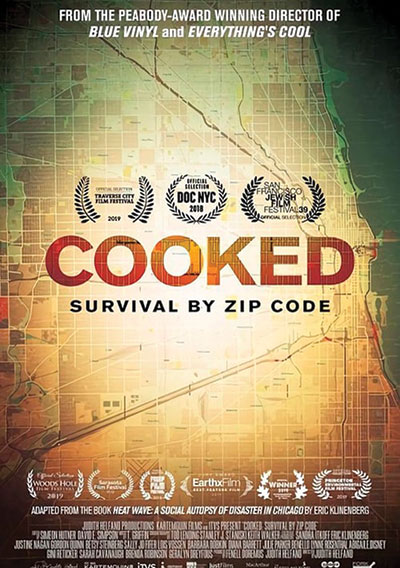Planning April 2020
Et Cetera
Now Streaming: When Your Zip Code Is a Health Risk

City estimates put the death toll of Chicago's 1995 heat wave at 739 people. When more than 40 of those victims could not be identified, they were laid to rest in a mass grave provided by a nearby suburban cemetery. AP Photo/Beth A Keiser.
In these days of global pandemics, hurricanes, floods, raging wildfires, and other disasters of seemingly biblical proportions, it can be hard to remember how devastating even a simple heat wave can be — especially when the conditions of poverty, aging, urban air pollution, and failing infrastructure combine, as they did in Chicago 25 years ago. In the summer of 1995, the heat index spiked to more than 126 degrees, leading to the death of more than 700 residents in just one week.
This human-made tragedy is the subject of Cooked: Survival by Zip Code, a new PBS/Independent Lens documentary by Judith Helfand based on Eric Klinenberg's excellent 2002 book, Heat Wave: A Social Autopsy of Disaster in Chicago.

Courtesy Kartemquin Films.
As the film explores, most of the victims were low income, elderly, and Black, and they died alone and isolated — killed more by social neglect, structural racism, and poor planning than the heat itself. For people living on the edge — both physically and economically — access to a reliable electric grid, an air-conditioned library or senior center, or even just a simple crosstown bus can mean the difference between life and death.
At the heart of this analysis is a simple and striking "heat death map," which uses the basic tools of spatial analysis familiar to most planners to make the case, finding "almost perfect overlaps" between neighborhoods with the most heat-related deaths and those with the highest levels of poverty.
The film is available for streaming. Viewers will also find extensive background and follow-up material on this pressing and oft-ignored challenge.
Ezra Haber Glenn, AICP, is Planning's regular film reviewer. He teaches at MIT's Department of Urban Studies & Planning and writes about cities and film at urbanfilm.org.
Exhibits: Houston Culture
NPC20's host city is home to an Arts District, a Museum District, and a whole host of public art installations. If you're headed to Houston this month, these exhibits are a great place to start:
For Beauty in Function
The Houston Museum of Natural Science's exhibit State of Water: Our Most Valuable Resource celebrates the design of our water supply's infrastructure, all through a collection of Brad Temkin's striking photography.
For a Walk in the Past
In 1954, a group of preservationists rallied to save the 1847 Kellum-Noble House in lush Sam Houston Park. Since then, the Houston Heritage Society has restored and moved nine other historic buildings there.
For Quirky Nostalgia
Six Flags AstroWorld closed in 2005 after 37 beloved years, but it lives on at Houston's Central Library. The original model, used to guide the park's construction, is the centerpiece of the exhibit.
Jim Sweeney writes about architecture, art, and design from Rockville, Maryland.


